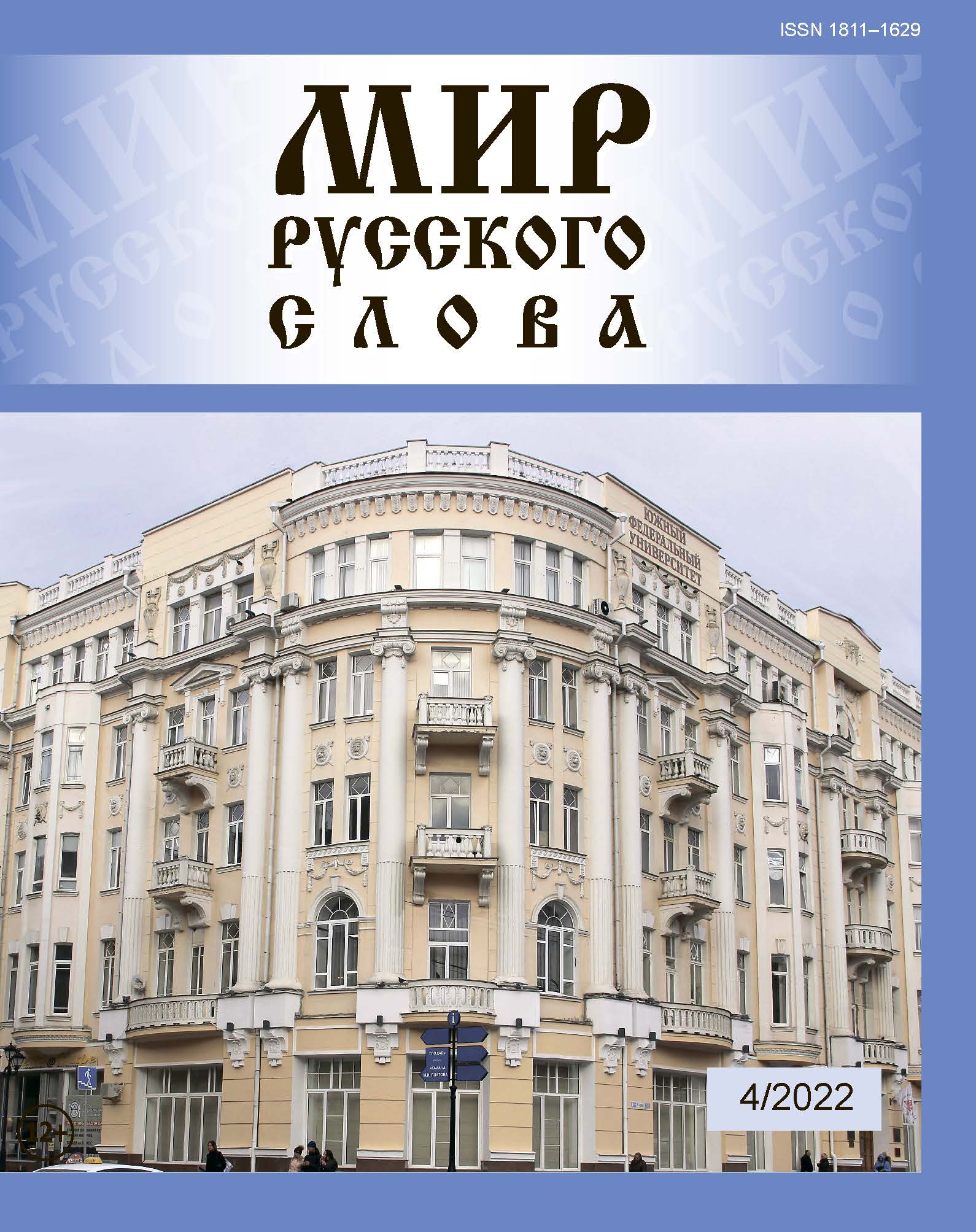Emotive vocabulary in the publications of the “uchitelskaya gazeta“ (“teacher's newspaper”) dedicated to the transitionof educational institutions to remote forms of work
DOI:
https://doi.org/10.24412/1811-1629-2022-4-71-81Abstract
The article explores the features of semantics and functioning of emotive vocabulary in the
journalistic variety of pedagogical discourse. The study of emotive aspects of language and speech
is one of the promising areas of modern linguistics, however, despite numerous studies, there are diffi culties in the scholarly description and classifi cation of
emotive language units. Emotive vocabulary in the work, following
L.G. Babenko, is understood as a set of vocabulary of emotions
and emotional vocabulary in their traditional understanding.
Pedagogical discourse is considered in its journalistic variety on
the material of the “Uchitelskaya Gazeta“ (“Teacher's Newspaper”).
The purpose of the article is to characterize the emotive vocabulary
presented in the journalistic variety of pedagogical discourse,
in semantic, morphological and situational-thematic aspects.
The research material was the publications of the “Teacher's
Newspaper” devoted to the transition of educational institutions
to a distance learning format in connection with the coronavirus
pandemic. Th e selection of language material was carried out by
the continuous sampling method. The novelty of the study lies in
the fact that the object of study is language material that has not
previously been the object of special consideration. The method of
discursive analysis, component analysis, the method of semantic
fields, the method of quantitative calculations were used in the
work. The conducted research allows us to draw a number of
conclusions about the functioning of emotive vocabulary in the
journalistic statements of participants in pedagogical discourse.
In all types of sources, the vocabulary of emotions slightly
prevails over emotionally colored units. Among the vocabulary
of emotions, units with a negative assessment significantly prevail
over units with a positive assessment in the statements of teachers
and parents, and in the speech of schoolchildren and students they
occur in approximately equal proportions. The semantic groups
“tension, fatigue” and “anxiety, fear” are presented in all sources
of language material. Among emotionally colored lexical units,
emotionally colored vocabulary prevails, represented by various
parts of speech, isolated cases of increased emotionality due to the
use of stable expressions, means of word formation and irony are
noted.
Keywords:
emotive vocabulary, verbalization of emotions, vocabulary of emotions, emotionally colored vocabulary, pedagogical discourse, “Uchitelskaya gazeta” (“Teacher's Newspaper”)
Downloads
Downloads
Published
How to Cite
Issue
Section
License
Articles of "The World of Russian Word" are open access distributed under the terms of the License Agreement with Saint Petersburg State University, which permits to the authors unrestricted distribution and self-archiving free of charge.




